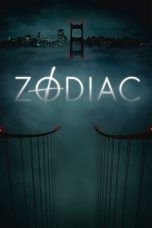- Source: July 1953 lunar eclipse
A total lunar eclipse took place on Sunday, July 26, 1953.
The Moon passed through the very center of the Earth's shadow. While the visual effect of a total lunar eclipse is variable, the Moon may have been stained a deep orange or red colour at maximum eclipse. This was a great spectacle for everyone who saw it from Australia as well as parts of Asia, Korea, New Zealand and Hawaii. The partial lunar eclipse lasted for 3 hours and 35 minutes 42 seconds in total.
With an umbral lunar eclipse magnitude of 1.8628, this was the largest lunar eclipse of the 20th century. Gamma had a value of only -0.0071. Due to the Moon's relatively large size, totality lasted 100 minutes 42 seconds unlike July 16, 2000 which lasted 106 minutes 25 seconds, the longest since August 13, 1859 (which was only 3 seconds longer). This was the darkest total lunar eclipse in the 20th century.
Visibility
It can all be seen from Australia, is seen rising in East Asia and is seen in North and South America. It is also visible from Korea as well as New Zealand and Hawaii, including Vietnam
Related lunar eclipses
= Lunar year series
== Saros series
=Lunar saros series 128, repeating every 18 years and 11 days, has a total of 71 lunar eclipse events including 57 umbral eclipses (42 partial lunar eclipses and 15 total lunar eclipses). Solar Saros 135 interleaves with this lunar saros with an event occurring every 9 years 5 days alternating between each saros series.
Lunar Saros 128 contains 15 total lunar eclipses between 1845 and 2097 (in years 1845, 1863, 1881, 1899, 1917, 1935, 1953, 1971, 1989, 2007, 2025, 2043, 2061, 2079 and 2097). Solar Saros 135 interleaves with this lunar saros with an event occurring every 9 years 5 days alternating between each saros series.
= Inex series
=The inex series repeats eclipses 20 days short of 29 years, repeating on average every 10571.95 days. This period is equal to 358 lunations (synodic months) and 388.5 draconic months. Saros series increment by one on successive Inex events and repeat at alternate ascending and descending lunar nodes.
This period is 383.6734 anomalistic months (the period of the Moon's elliptical orbital precession). Despite the average 0.05 time-of-day shift between subsequent events, the variation of the Moon in its elliptical orbit at each event causes the actual eclipse time to vary significantly. It is a part of Lunar Inex series 39.
All events in this series listed below and more are total lunar eclipses.
= Half-Saros cycle
=A lunar eclipse will be preceded and followed by solar eclipses by 9 years and 5.5 days (a half saros). This lunar eclipse is related to two annular solar eclipses of Solar Saros 135.
See also
List of lunar eclipses
List of 20th-century lunar eclipses
Notes
External links
NASA: Lunar Eclipses: Past and Future
1953 Jul 26 chart Eclipse Predictions by Fred Espenak, NASA/GSFC
Index to Five Millennium Catalog of Lunar Eclipses, -1999 to +3000 (2000 BCE to 3000 CE)
Eclipses: 1901 to 2000
Photoelectric Photometry of the Lunar Eclipse of July 26, 1953, Publications of the Astronomical Society of the Pacific, Vol. 69, No. 407, p.153
References
Bao-Lin Liu, Canon of Lunar Eclipses 1500 B.C.-A.D. 3000, 1992
Kata Kunci Pencarian:
- Jupiter
- Sejarah garis bujur
- July 1953 lunar eclipse
- 1953 lunar eclipse
- July 1982 lunar eclipse
- September 2025 lunar eclipse
- July 1935 lunar eclipse
- July 1954 lunar eclipse
- Eclipse
- Eclipse season
- July 1962 lunar eclipse
- August 2007 lunar eclipse
Oppenheimer (2023)
Lara Croft: Tomb Raider (2001)
The Moon (2023)
2001: A Space Odyssey (1968)
No More Posts Available.
No more pages to load.














